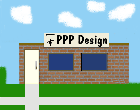5 W's and an H
06/26/2023The 5W1H method has been a well-known problem-solving tool for years. Corporations, charities, police departments, journalists, and researchers use the 5W1H method. The method is also known as the Kipling method in honor of the British Poet Rudyard Kipling. Kipling's book The Elephants Child first outlined the approach. What, Why, When, Where, and Who represent the 5 W's and How the 1 H.
What
Thinking of What helps outline the issue or problem. What is the objective, and which tasks and departments will be involved? What is the core problem we are trying to solve?
Why
Why are we trying to solve this problem? Why did the issue occur? Why is it important? This question broadens our perspective. To question why helps us prevent the problem from recurring in the future.
When
When establishes a timeline, and identifies if the problem is a one-time thing or a reoccurring event. When also helps establish deadlines for fixing the issue and the duration of any fix.
Where
Where specifies where the issue took place. Where are the people or resources necessary to address the problem? Would the result be the same in a different location? Does this issue need to be addressed globally or locally?
Who
Who helps us determine the responsible parties and the people impacted by the event? Who will address the problem? Who will be in charge? Who was accountable when the issue took place?
How
How do we solve the problem? How do we ensure that any solution is sustainable? How will resources be allocated to fix the issue? How do we make sure this does not happen again?
A Second H
Some businesses implement another H within the equation. The second H stands for how much. How much will it cost to solve the problem, and where will the funds come from? How can we mitigate expenses?
You can expand each of the five W's and 1 H (or 2H) to include more industry-specific questions. Some organizations have developed worksheets to bolster the use of the 5W1H process. These examples use generic questions to make a point. An exhaustive approach will prove more helpful in finding solutions to specific problems.
5W1H is a simple, systematic approach to problem-solving. The method works well for brainstorming sessions, board meetings, purchasing, and more. The process helps reveal details that may result in a better solution.

